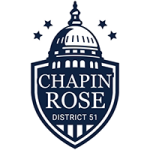SPRINGFIELD, IL – Last week, Governor Pat Quinn presented his constitutionally required state budget address and made a formal recommendation for the next fiscal year which begins July 1.
Under the Illinois Constitution, the budget address is sort of the “kick off” to budget negotiations. The Governor introduces a specific budget proposal and then the General Assembly negotiates with him in a process that is supposed to conclude by May 31. In the last few years, the legislature has completed a budget by this date.
However, in the past, budget wrangling has gone beyond the May 31 deadline. In 2007, Governor Blagojevich, after giving his budget address, did not return to Springfield to begin negotiating until after the Fourth of July.
Despite Blagojevich’s obvious lack of leadership, the role of a Governor in budget negotiations is critical – and far more critical in Illinois than some other states because our Governor has line-item veto power. This allows the Governor to simply cut and delete specific funding lines rather than have to reject an entire budget outright through a total veto.
For example, if on May 31, the legislature sends the Governor a budget that includes funding to keep state prisons open, the Governor can simply reduce the specific line that relates to prisons and the rest of the budget still goes into effect. By the time the legislature returns in early winter for the mandated “veto session” to take up the Governor’s vetoes, almost half the budget year has passed and prison closures would have already moved forward – this is exactly what happened with Tamms and Dwight Correctional Centers this year.
Thus, while Quinn’s proposals can be changed and modified by the legislature, he cannot be ignored. Nor can the General Assembly simply go around him as is often suggested.
Which brings us to “step one” in the budget process: obtaining a credible estimate of how much money is going to be available for the state to spend. Two years ago, the “rank and file” members of the House of Representatives changed the process in order to achieve greater transparency and budgeting reforms. Now Illinois revenue estimates used by the legislature are provided by economists – not politicians – and are based upon economic forecasting models of international, national, and state trends.
Pat Quinn’s proposed budget contains revenue estimates that are $500 million higher than the one provided by the economists working with the House Revenue Committee. The question begs itself: which number do you trust more – Quinn’s or the economists?
Now let’s shift our analysis from the revenue to spending side of the equation. The Governor correctly notes that the state’s required pension payment increases $1 billion next year and that cuts to the budget are necessary to off-set this increase.
To that end, Quinn is proposing cuts to K-12 funding of $308.7 million (4.7%) less than last year. Higher education gets a 4.0% cut ($79.6 million) and our local higher education institutions (Illinois State, Eastern, and the University of Illinois) are slated for 4.9% in proposed cuts.
Governor Quinn engages in “doublespeak” about shared sacrifice in his budget because while he plans the cuts to education above, he intends to increase both spending and headcounts in agencies under his control such as the Department of Human Services, Illinois State Police, and Environmental Protection.
In another example, Quinn touts “saving the taxpayers” money by closing numerous state facilities last year, only to now spend that savings in other areas. The Illinois Department of Corrections shuttered five facilities and fired prison guards. Now Quinn wants to increase that agency’s headcount by 38. Statewide he intends to hire over 900 new employees – while local schools are left to manage cuts. Is this shared sacrifice?
It is no shock that Chicago’s Governor would look out for the “Windy City,” but when you peel back the layers even more on Quinn’s introduced budget, you’ll find wholesale decimation of downstate schools. One need look no further than his proposal to cut K-12 transportation funding to just 19% of necessary cost to see that this is not shared sacrifice.
Such a cut harms downstate, rural school districts with hundreds of miles of pavement for buses to traverse daily. Quinn also targeted certain lines within the K-12 state aide formula that favor downstate and suburban schools, but then increased a line that Chicago Public Schools rely on.
That is, obviously, the bad news. The good news is that lawmakers are mostly opposed to his budget request and now the negotiations begin in earnest. Based upon conversations with colleagues in the House and Senate from both parties, I can easily say that there is little support for Quinn’s introduced budget and that work has already begun on alternatives – which will be the topic of a future column.

